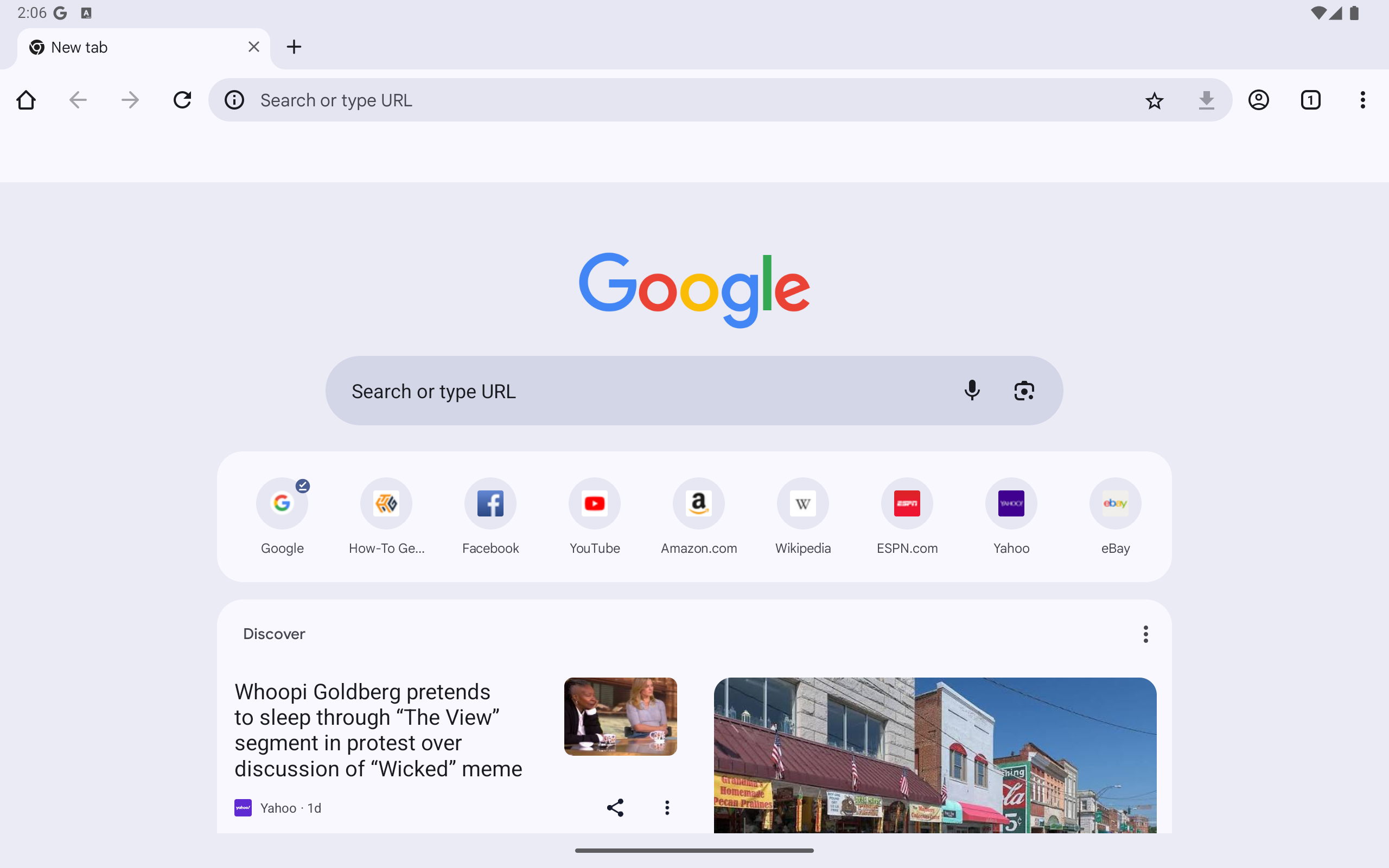Google Chrome is finally getting an always-visible bookmarks bar on Android devices. It’s currently being tested as an experimental feature flag.
A new commit in the code repository for Chromium (the open-source part of Chrome) added initial support for a bookmarks bar in Chrome for Android. Even though the desktop versions of Chrome have had a bookmarks bar since the first public releases, it has never been ported to the mobile versions, even on tablets that have more than enough screen space.
The functionality is being tested with the #android-bookmark-bar feature flag. It’s just a blank bar right now (see the below screenshot), but the commit message explains, “Later implementation phases will populate/polish the bookmark bar as well as add standard bookmark bar capabilities.” It also seems to only work on tablets and other large-screen devices right now—the feature flag description mentions “device form factor restrictions also apply,” so that limitation will probably stay in place.
The lack of a bookmarks bar is one of the main differences between Chrome on Android tablets and desktop Chrome, along with missing support for browser extensions and some missing web APIs. Third-party web browsers like Vivaldi already have an optional bookmarks bar on Android devices, and Safari on iPad has included a favorites bar for years. Google is catching up to the competition here, but better late than never.
Not everyone uses bookmarks, but having one-click access to certain pages can be a helpful productivity boost, so it’s great to see that finally coming to Chrome on Android. It’s not clear yet which visibility options will be supported, as Google’s main design document for the feature is hidden from public access, and the code comments don’t explain everything. In this early implementation, the bar is always visible below the address bar, mimicking the always-on setting in desktop Chrome.
We also don’t know yet if this change will come to Chrome on iPad. There are some design differences between the Android and iOS browsers (the address bar can be moved to the bottom on iOS, for example), but this seems like something that both platforms should have.
Source: Chromium GitHub





